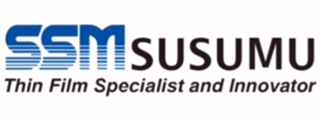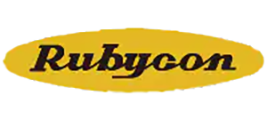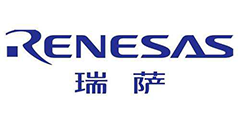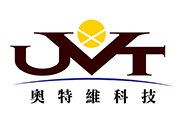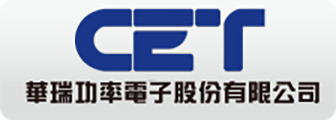- Ameya360 Component Supply Platform >
- Trade news >
- Startup Takes NB-IoT to New Lows
Startup Takes NB-IoT to New Lows
Move over, Qualcomm and Sequans. In the limbo dance of the Internet of Things, a startup comes out of stealth mode today, taking cellular networking to new lows in power and price.
Riot Micro is sampling a modem tailored for the latest 4G IoT standards. It claims that its RM1000 chip draws milliamps to microamps of power and could sell for well below the industry’s target of a $5 module.
Carriers around the world are just starting to turn on various flavors of LTE-based cellular IoT networks. They aim to leapfrog an emerging crop of emerging low-power wide-area networks such as LoRa, Sigfox, 802.11ah Wi-Fi, and others.
The Riot Micro chip is designed to handle both the Narrowband IoT and LTE Cat M1 (aka eMTC) standards. “The modems are very, very similar with a lot of commonalities between the two; and they don’t run simultaneously, it’s one or the other,” said Peter Wong, chief executive of the startup.
Rather than implement baseband functions in software on a DSP, Riot carved fast Fourier transforms and baseband filters into its physical layer block. Separately, it stripped an LTE protocol stack down to just the essentials needed for the IoT specs.
The result is a 55-nm TSMC chip that processes NB-IoT and Cat M1 using a 26-MHz ARM M0 controller, Mbytes of embedded SRAM, and new PLLs. Competing chips tend to use a controller running at greater than 100 MHz and using as much as 16 Mbytes of RAM, often some of it external.
The slow clock rate lets Riot use low-dropout regulators for power management in place of more expensive DC/DC converters that competitors need to compensate for the noise of faster logic.
The result is a baseband that draws about 20 milliamps from a 3.7-V battery when handling 23-dBm transmissions. A full chipset that includes a third-party power amp and RFIC draws about 100 milliamps.
In sleep mode, the part draws less than two microamps. Most of the chip sleeps while code watches a paging channel for signals. Riot claims that the chip has less latency going in and out of sleep mode than rival devices given that it does not have to load DSP code.
“We think [that] we can bring the cost of cellular close to that of Bluetooth so we can help drive the deployment of the IoT,” said Wong.
The RM1000 evaluation boards use Skyworks power amps and RFICs from ACP AG of Switzerland. However, they could also work with chips from Qorvo or other suppliers.
The startup faces two top challenges. Its highly tailored modem means that it does not support fallback to legacy 2/3G and LTE standards that rival chips handle with software on DSP cores.
As recently as a year ago, Riot considered supporting 2G, “but the requirement seems to have gone away,” said Greg Wynans, vice president of marketing at Riot.
Now carriers are more interested in hitting new power and price lows with NB-IoT. In addition, some see NB-IoT as part of their transition plan to turning off 2G networks, which were not designed to support massive numbers of IoT nodes, he said.
The other challenge for Riot is that it’s a newcomer with untested silicon and software. So the startup is testing its chips with base stations and carrier software, aiming for production silicon by June.
“The downside of a hardware-centric approach is [that] you have to get it right,” said Wong, adding that the company has had working chips for four months. “We don’t have the option of changing firmware on a DSP, so we did a lot of emulation before it went to the field.”
Rivals such as Qualcomm and Sequans already have M1 and NB-IoT chips going into carrier trials. As volumes ramp, they are expected to field silicon more optimized for the specs, and giants such as Intel and Qualcomm already have the power amps and RFICs that they need in-house.
“I don’t know if anyone will do hardware-centric design like we have done, but they may use lower power and lower frequency DSPs … and some of them may not have their own protocol stacks,” said Wong.
For its part, Riot may integrate power amps or RFICs in a next-generation part. However, finding independent sources of IP for those blocks is not easy, and to date, Riot lacks its own analog team.
The company has raised an undisclosed sum of less than $20 million since it was founded about four years ago. The company initially aimed to sell LTE protocol stacks until Wong joined as CEO three years ago after serving as a tech strategist at LSI.
“We pivoted hard from IP and algorithm development and retooled the staff to become a semiconductor company,” he said. “We saw [that] others were repurposing LTE modems” for NB-IoT.
Wong hired an LTE protocol team from Blackberry and Bluetooth and Wi-Fi chip experts from the former Newport Media that had been acquired by Broadcom. The RM1000 comes in an 8 x 8-mm 68-pad QFN package or a 3.5 x 3.2-mm WLCSP.
Online messageinquiry
- Week of hot material
- Material in short supply seckilling
| model | brand | Quote |
|---|---|---|
| TL431ACLPR | Texas Instruments | |
| RB751G-40T2R | ROHM Semiconductor | |
| BD71847AMWV-E2 | ROHM Semiconductor | |
| CDZVT2R20B | ROHM Semiconductor | |
| MC33074DR2G | onsemi |
| model | brand | To snap up |
|---|---|---|
| BP3621 | ROHM Semiconductor | |
| BU33JA2MNVX-CTL | ROHM Semiconductor | |
| STM32F429IGT6 | STMicroelectronics | |
| TPS63050YFFR | Texas Instruments | |
| ESR03EZPJ151 | ROHM Semiconductor | |
| IPZ40N04S5L4R8ATMA1 | Infineon Technologies |
- Week of ranking
- Month ranking
Qr code of ameya360 official account
Identify TWO-DIMENSIONAL code, you can pay attention to


Please enter the verification code in the image below:


